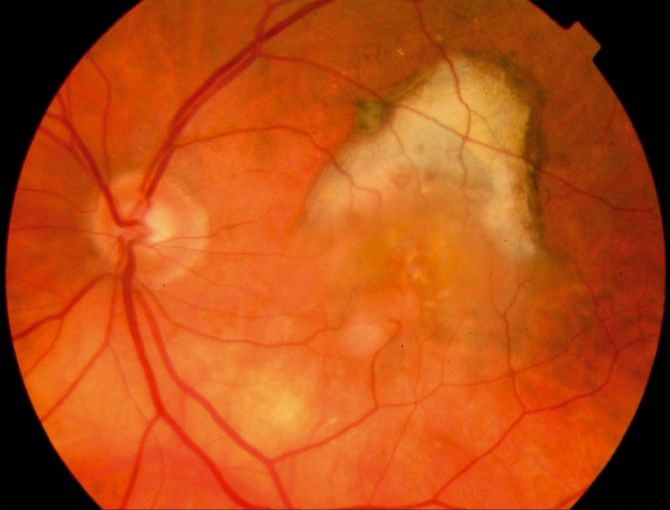Major Breakthrough in Age-Related Macular Degeneration

In what could potentially lead to a novel therapy for one of the common forms of blindness, scientists at Trinity College Dublin have discovered that a part of the immune system called the infllamosome is involved in regulating the development of Age-Related Macular Degeneration (AMD). They have discovered that by controlling an inflammatory component IL-18, in cases of AMD could prevent the development of the disease.
According to National Eye Institute, AMD is a common eye condition among people age 50 or older. It is a leading cause of vision loss in older adults. It gradually destroys the macula, the part of the eye that provides sharp, central vision needed for seeing objects clearly. In some people, AMD advances so slowly that vision loss does not occur for a long time. In others, the disorder progresses faster and may lead to a loss of vision.
AMD affects day to day activities like reading or driving. AMD is detected by the presence of ‘drusen’ which are recognised during an eye exam as yellowish deposits in the macula. Macula is the central region of the retina, a delicate membrane that acts like a screen reflects the light in the eye.
AMD can either be ‘dry’ or ‘wet’ depending upon the formation of blood vessels. The wet form of AMD is the advanced stage where the photoreceptor cells are irreversibly damaged. Only about 10% of all cases of AMD are wet type.
Research shows that smoking increases the risk of AMD by about two folds.
The scientists at Trinity, Dr Sarah Doyle and Dr. Mathew Campbell have discovered that drusen can lead to two inflammatory components named IL- 1beta and IL-18.
“Traditionally, inflammation in the retina or indeed the eye in general is not beneficial and is a pathological hallmark of many eye diseases, including AMD. However we have identified, that one inflammatory component termed IL-18 acts as a so-called anti-angiogenic factor, preventing the progression of wet AMD” said Dr. Campbell.
The results of the study indicate that by controlling the levels of IL-18, in the patients with the dry form of the disease could prevent the development of the wet form of the disease. Dr Doyle is positive that this research could pave way for new treatments for this disease.
US has about 1.8 million 40 years or older that are affected by AMD and an additional 7.3 million with large drusen are at risk of developing AMD. By 2020, US will have about 2.90 million people with AMD.
The research was published in the international medical journal Nature Medicine.



























